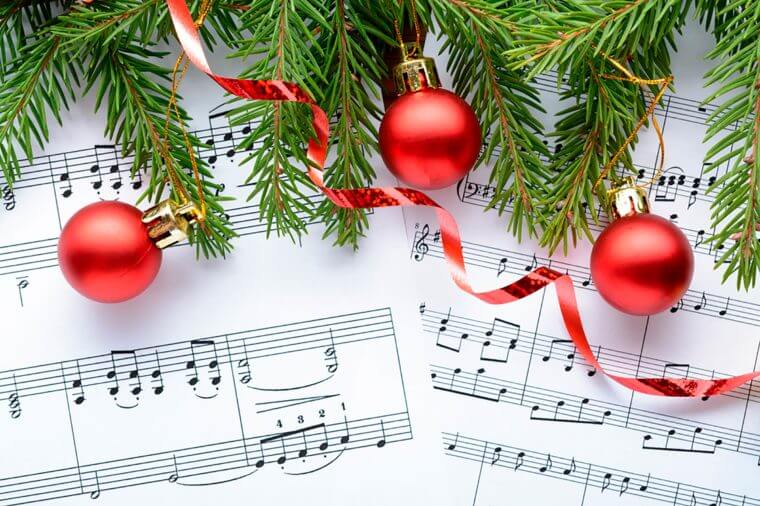“Away in a Manger.” “Silent Night.” “Hark! The Harold Angels Sing.” These names are probably what come to mind when you think about traditional Christmas carols. As classic as these songs are, they’re actually not that old—and definitely not as old as the first Christmas carols.
Christians have been celebrating Christmas since at least 375 A.D. (that’s supposedly when the Church first recognized December 25 as Christmas Day), but “Hark!” came around more than 1,300 years later in 1739. Joseph Mohr wrote the lyrics to “Silent Night” in 1818, and “Away in a Manger” was written even later in 1882. So what did people sing before these classics?
Technically, they sang hymns, not carols. Hymns are more solemn, religious songs, while carols were considered dances accompanied by music, according to NPR. The first of these Christmas hymns was likely “Jesus Refulsit Omnium” (“Jesus, Light of All the Nations”), written by St. Hilary of Poitier in the 4th century.
Another early Christmas hymn is “Corde natus ex Parentis” (“Of the Father’s Love Begotten). Christian poet Prudentius wrote the Latin poem that inspired this song in the 4th century as well, but it wasn’t set to music until centuries later. You won’t hear either of these early “carols” on the radio, but both are still sung at religious services around Christmas.
As far as more familiar Christmas carols, those still don’t appear for centuries. “The Friendly Beasts,” a carol about the animals present at the Nativity, probably originated in France in the 12th century. Fast-forward 500 years, and the world got “Adeste Fideles.” (It was translated in to English as “Oh Come, All Ye Faithful” in 1841.) Just a few years after “Adeste Fideles” came “God Rest Ye Merry Gentlemen,” around 1760.
Now when you hear youngsters call Christmas carols by Bing Crosby and Frank Sinatra “old,” you can smile to yourself. They don’t even know the half of it.












